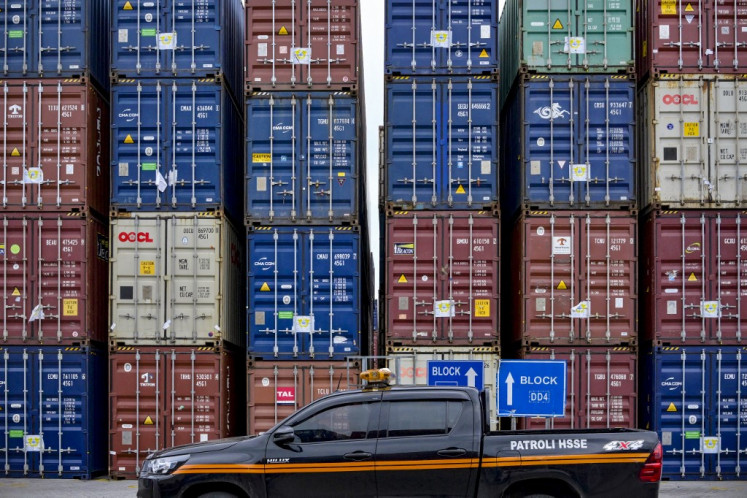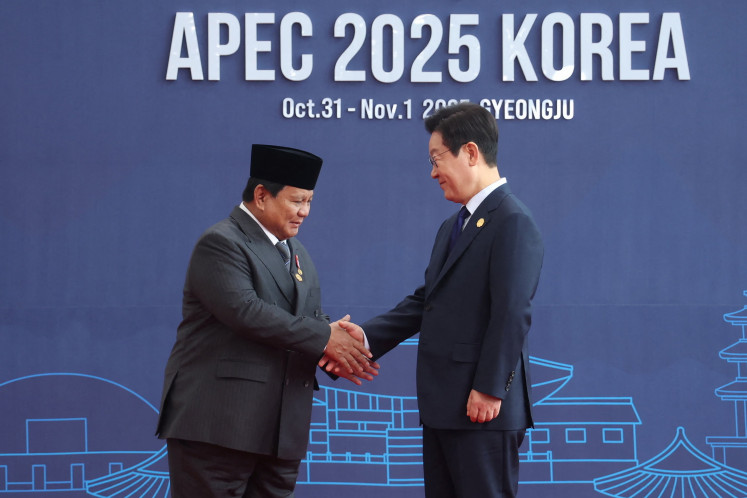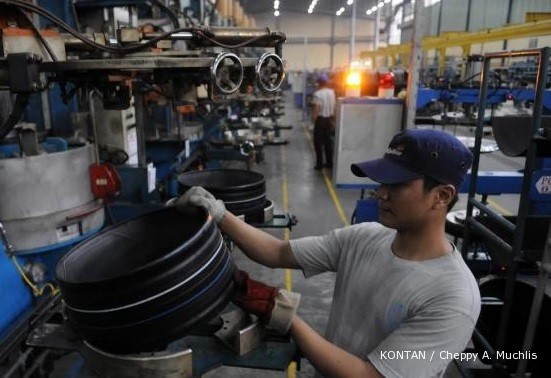Popular Reads
Top Results
Can't find what you're looking for?
View all search resultsPopular Reads
Top Results
Can't find what you're looking for?
View all search resultsWill child ID cards really protect children's rights?
Across Indonesia, at least half of all girls and boys have no birth certificates, according to national data, with coverage being especially meager among low-income and rural populations.The government knows this, which is why when President Joko “Jokowi” Widodo signed the National Mid-Term Development Plan in 2015, he committed to increasing birth certificate coverage for children to 85 percent by 2019. The Home Ministry, which is responsible for producing birth certificates, has responded by creating a parallel identity document.In February, the ministry formally announced that its district and municipal population and civil registration offices would issue Child Identity Cards (KIA) to every unmarried Indonesian below 18 years old.
Change text size
Gift Premium Articles
to Anyone
C
hildren have the right to an identity and to have their names, family ties and nationality recognized officially by their government. But across Indonesia, at least half of all girls and boys have no birth certificates, according to national data, with coverage being especially meager among low-income and rural populations.
The government knows this, which is why when President Joko “Jokowi” Widodo signed the National Mid-Term Development Plan in 2015, he committed to increasing birth certificate coverage for children to 85 percent by 2019. The Home Ministry, which is responsible for producing birth certificates, has responded by creating a parallel identity document.
In February, the ministry formally announced that its district and municipal population and civil registration offices would issue Child Identity Cards (KIA) to every unmarried Indonesian below 18 years old.
According to Home Ministry Regulation No. 2/2016 on Child Identity Cards, the cards will enable the government to better protect children’s rights, while also contributing to its data collection capabilities. By requiring birth certificates for KIA applications, the ministry also hopes that the cards will incentivize birth certificate ownership. But all this will depend largely on the ministry’s ability to achieve rapid, mass coverage of KIA.
Although a number of articles have reported that KIA ownership will be made compulsory for children, the current regulation actually does not provide for this. If KIA were made compulsory, parents could presumably face fines for failing to apply, as has been the case with birth certificates. While this might be enough to create demand in some areas, it could also create structural discrimination against the poor, who tend to have the lowest ownership of identity documents, while also being among the most dependent on government services and the least capable of paying fines.
In municipalities that have already experimented with ID cards for children, some have found short-term success in expanding coverage by using the carrot rather than the stick. Surakarta, for instance, partnered with local businesses to provide discounts for school supplies and staple foods for parents of children with IDs.
The long-term efficacy of such a system, however, hinges on the sustained buy-in of local businesses, which in turn depends on a strong consumer base and reliable government funding. This may be an especially challenging model to replicate and sustain in rural areas, where the kind of robust business environment needed to make such a discount scheme viable is harder to come by.
The KIA initiative has already come under fire from child rights activists for taking away resources from more direct efforts to improve the country’s birth registration system. Training related to KIA alone will reportedly cost the ministry Rp 8.7 billion (US$650 million) this year. The home minister has defended the plan, according to a recent article from The Jakarta Post, by noting that ID cards are more convenient to carry than birth certificates. This might be true, but it is hard to believe that half of Indonesian children are unregistered because birth certificates are too large for their wallets.
According to research done by the Child Protection Center at the University of Indonesia, where I work, children are unregistered because the application process is complex and confusing, laden with indirect costs like transportation fees, the offices authorized to provide them are too far away from homes and because birth certificates confer few direct benefits. It is unclear how the KIA initiative addresses — or anticipates — any of these bottlenecks.
If the ministry can find a way to make KIA of significant value to children and their parents, especially those in low-income households, then this pull factor might be strong enough to carry over to birth certificates. This would entail going beyond partnerships with local businesses, to working closely with the education, social affairs, development planning and health ministries, at least, so that KIA can truly safeguard children’s rights by facilitating access to basic services for those with the greatest need.
Resulting data on vital statistics should also be shared among relevant ministries, after being anonymized, to enable a common vision of services planning and a standard benchmark for evaluation.
The ability of KIA to incentivize birth registration will also depend on the birth certification requirement being enforced consistently, which sounds easy but is not, and again, could create structural discrimination.
Take the example of family cards, another form of identity managed by the Home Affairs Ministry. At the moment, birth certificates are legally required for adding new members to family cards, which is needed before the person can access many government services, like national health insurance. My interviews with multiple population administration officers around the country, however, indicate that they often ignore the birth certificate requirement when producing new or updated family cards, rather than allowing members of their community to become ineligible for services. In order to incentivize birth certificates while protecting the rights of all children, strict enforcement of application requirements must follow broad outreach services targeted to low-income families, particularly in rural villages.
Critics of KIA have also noted the underperformance of the country’s existing system for providing national ID cards (KTP) to adults, as there are currently 30 million adults missing from the national database, according to a recent Post article. Investing in yet another type of identity document will not contribute to the capacity building or outreach campaigns that are needed to reach those millions, never mind those without birth certificates, family cards, marriage certificates, or death certificates, none of which have inspiring coverage.
From the information that has been released to date, there is no indication that the KIA initiative will break the established pattern of favoring relatively well-off families in urban centers. On the contrary, it seems slated to add another layer of confusion about what documents to process where, when and for what purpose, a confusion that many in villages cite as the very reason they did not seek birth certificates for their children in the first place.
***
Cyril Bennouna is the technical lead for research at the University of Indonesia's Child Protection Center and a senior research associate at the CPC Learning Network in New York. He is based in Jakarta.
---------------
We are looking for information, opinions, and in-depth analysis from experts or scholars in a variety of fields. We choose articles based on facts or opinions about general news, as well as quality analysis and commentary about Indonesia or international events. Send your piece to community@jakpost.com.










